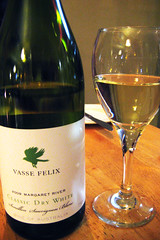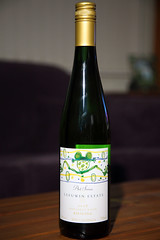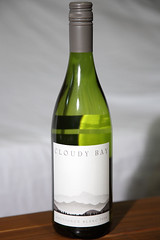
 Another double wine post. The first is a “Classic Dry White” blend from Vasse Felix in Margaret River, one of the major Western Australian vineyards. It’s a blend of Semillon and Sauvignon blanc, and tastes pretty much like it. There’s some grassy and herby tanginess from the Sauvignon blanc, tempered by the mild smoothness of the Semillon. I had it with some seafood chowder and grilled salmon. The acidity cut through the creamy chowder nicely. It wasn’t a particularly exciting wine, but not bad.
Another double wine post. The first is a “Classic Dry White” blend from Vasse Felix in Margaret River, one of the major Western Australian vineyards. It’s a blend of Semillon and Sauvignon blanc, and tastes pretty much like it. There’s some grassy and herby tanginess from the Sauvignon blanc, tempered by the mild smoothness of the Semillon. I had it with some seafood chowder and grilled salmon. The acidity cut through the creamy chowder nicely. It wasn’t a particularly exciting wine, but not bad.
Next we have a Carménère from the Maipo Valley in Chile. This is the first time I’ve tried this grape variety and also my first Chilean wine. I wasn’t quite sure what to expect; I’d read that Carménère is similar to Merlot. But this had a character all its own. The aroma is strong and heady with the alcohol, and touches of dark fruits like plums and black cherries. In the glass it swirls thickly, coating the inside and running down in great viscous drips of deep red. It almost has a blood-like aura to it – I can easily imagine this is the sort of red wine that vampires drink.
The taste is more dark fruit, thick and rich and strong. There’s a touch of spiciness and a body that the wife identified as chocolatey. And there’s a bitterness there too, but it’s not harsh like raw tannin, it’s more the bitterness of a really dark chocolate. By itself, this is overpowering, but with a spicy meat dish it worked rather well I thought. I think this could do with some time to mature, but then I don’t really know what that would do to this. It was too much for my wife, but I thought it was pretty good with some food.



